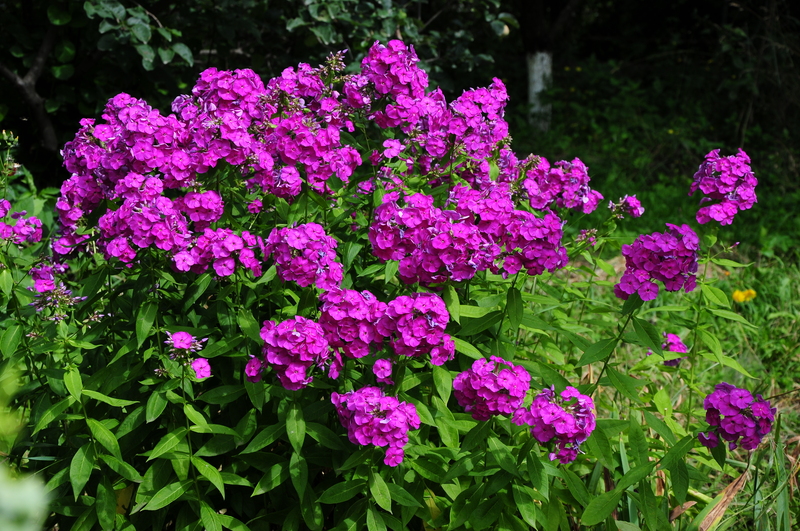Insider Advice for Beginners to Achieve the Perfect Lawn
Are you dreaming of a lush, green oasis right outside your door? Achieving the perfect lawn is a goal for many homeowners, but it can feel overwhelming, especially if you're new to lawn care. Don't worry - with the right information and some insider tips, cultivating a stunning yard is within your reach. In this comprehensive guide, you'll discover proven advice for beginners aiming to create a healthy, beautiful lawn. From soil health to mowing techniques, watering schedules, and seasonal care, we've got you covered.
Understanding Your Lawn: The Foundation of Success
Every successful lawn journey begins with a solid understanding of what you're working with. Factors such as grass type, soil conditions, and local climate will significantly influence your approach to lawn maintenance.
Know Your Grass Type
- Cool-Season Grasses (e.g., Kentucky bluegrass, fescue, ryegrass): Thrive in northern climates with moderate summers and cold winters.
- Warm-Season Grasses (e.g., Bermuda, St. Augustine, zoysia): Flourish in southern regions with hot summers and mild winters.
Selecting the right grass seed or sod is essential. If you're unsure, consult a local garden center or cooperative extension for recommendations on the best grass variety for your region.
Test Your Soil
Before any new lawn care regimen, conduct a soil test. This reveals pH levels and existing nutrients, guiding you in making necessary adjustments. Healthy soil is the backbone of a lush green lawn.
- Purchase a DIY soil testing kit or use a local soil testing service.
- Amend your soil based on the results, focusing on adding compost, organic matter, and adjusting pH as needed.

Lawn Establishment: Starting Right
Seeding vs. Sodding
For those starting from scratch, you have two options:
- Seeding: More affordable, greater grass variety choices, but requires patience and diligent care.
- Sodding: Immediate green coverage, quick soil stabilization, higher initial investment.
Insider tip: For the perfect start, prepare your soil by tilling and adding organic amendments before seeding or laying sod.
Essential Lawn Maintenance Habits for Beginners
With your grass growing, it's all about maintaining momentum with the following core practices. Consistency is the secret ingredient for a perfectly manicured lawn.
1. Mowing: Technique Matters
- Never cut more than one-third of the grass blade at once. Removing too much stresses the grass.
- Mow high! Taller grass shades the soil, conserves moisture, and suppresses weeds.
- Keep mower blades sharp for clean cuts, reducing disease risk.
- Shift mowing directions regularly to promote upright growth.
2. Watering: Deep and Infrequent Wins
- Water early morning to reduce evaporation and fungal issues.
- Target one inch of water weekly, including rainfall, applying it in one or two deep sessions.
- Deep watering encourages roots to grow deeper, enhancing drought resilience.
3. Fertilizing: Feed for Success
- Base fertilizer choices on soil test results.
- Follow seasonal fertilizer schedules for your grass type; cool-season grasses benefit from fall/spring applications, while warm-season varieties prefer late spring/summer feedings.
- Choose slow-release or organic fertilizers for steady, even growth.
4. Weed Management: Stop Problems Early
- Apply a pre-emergent herbicide in early spring to prevent weeds like crabgrass.
- Hand-pull weeds or spot-treat with an appropriate selective weed killer.
- A thick, healthy lawn naturally crowds out many weeds.
Seasonal Lawn Care Strategies
Advance planning and adapting your care routine by season makes achieving the ideal lawn easier and more effective.
Spring:
- Rake to remove leaves and debris.
- Aerate compacted soil to improve airflow and drainage.
- Fertilize for growth and overseed thin or bare patches.
- Apply pre-emergent weed treatments early.
Summer:
- Raise mowing height to reduce heat stress.
- Water deeply; avoid shallow, frequent watering.
- Monitor for pests (grubs, chinch bugs) and treat as needed.
Fall:
- Aerate again, especially for cool-season grasses.
- Apply fall fertilizer to strengthen roots for winter.
- Overseed to repair damage and maintain density.
Winter:
- Rake leaves and remove debris to prevent mold.
- Avoid heavy traffic on frozen or wet grass.
- Sharpen mower blades, clean tools, and plan for the spring ahead.
Advanced Lawn Care Tips for Ambitious Beginners
Ready to take your lawn to the next level? These expert tactics will set you apart:
1. Core Aerating
Core aeration involves mechanically removing plugs of soil. This relieves compaction, enhances nutrient uptake, and encourages robust roots.
- Best done in spring or fall for cool-season lawns; late spring for warm-season lawns.
- Follow aeration with overseeding and fertilizing for optimal results.
2. Overseeding
Spreading new seed over existing turf thickens your lawn and fills bare spots. Choose compatible seed blends to maintain uniform appearance.
3. Topdressing
Apply a thin layer of compost or soil mix after aeration or seeding. This boost improves soil structure and nutrient levels.
4. Sustainable Practices
- Use drought-tolerant and disease-resistant grass varieties.
- Water responsibly. Consider a rain barrel or smart irrigation to save resources.
- Mulch grass clippings to recycle nutrients back into the lawn.
- Reduce chemical inputs by opting for organic amendments where possible.
Common Mistakes For Beginners to Avoid
- Overwatering: Causes shallow roots, disease, and water waste.
- Cutting grass too short: Forces stress, invites weeds, and exposes soil.
- Ignoring pH imbalances: Hinders grass health and fertilizer efficiency.
- Neglecting equipment maintenance: Dull blades tear grass, spreading disease.
- Applying too much (or too little) fertilizer: Both scenarios can damage your lawn.
- Skipping seasonal care: Missed opportunities lead to more weeds, pests, and patchy turf.

Frequently Asked Questions: Insider Lawn Care Answers
How often should I mow my new lawn?
As soon as your grass reaches one-third above its recommended mowing height, it's time to mow. For most lawns, this means mowing once a week during the peak growing season.
What's the best way to prevent weeds?
A combination of pre-emergent weed control, proper mowing, regular feeding, and deep watering is essential for weed-free, vibrant lawns.
Is organic lawn care effective?
Absolutely! Amending soil with compost, mulching clippings, and using organic fertilizers promote long-term health — and support pollinators and soil microbes.
Why does my grass look yellow?
Common causes include nutrient deficiencies (often iron or nitrogen), improper watering, dull mower blades, or soil compaction. A soil test is the best place to start troubleshooting.
Final Thoughts: Your Path to the Perfect Lawn
Achieving a perfect green lawn isn't about expensive products or endless hours of work — it's about consistency, observation, and being proactive. Start with the foundations: healthy soil, the right grass type, and proper technique. Maintain regular care, adapt to the seasons, and keep learning. With these insider tips for beginner lawn enthusiasts, you'll soon be enjoying an envy-worthy yard that's the talk of your neighborhood!
Remember, every lawn is unique. By understanding your specific landscape and committing to a thoughtful care routine, your dream of the perfect lawn is closer than ever before!
Get Started On Your Journey to the Perfect Lawn Today!
- Test your soil and amend as needed.
- Choose the right grass for your climate.
- Develop a simple, seasonal lawn care plan.
- Stay consistent and observe your lawn's needs.
With patience and the right beginner's lawn care advice, anyone can enjoy a beautiful, healthy, green landscape for years to come!
```


